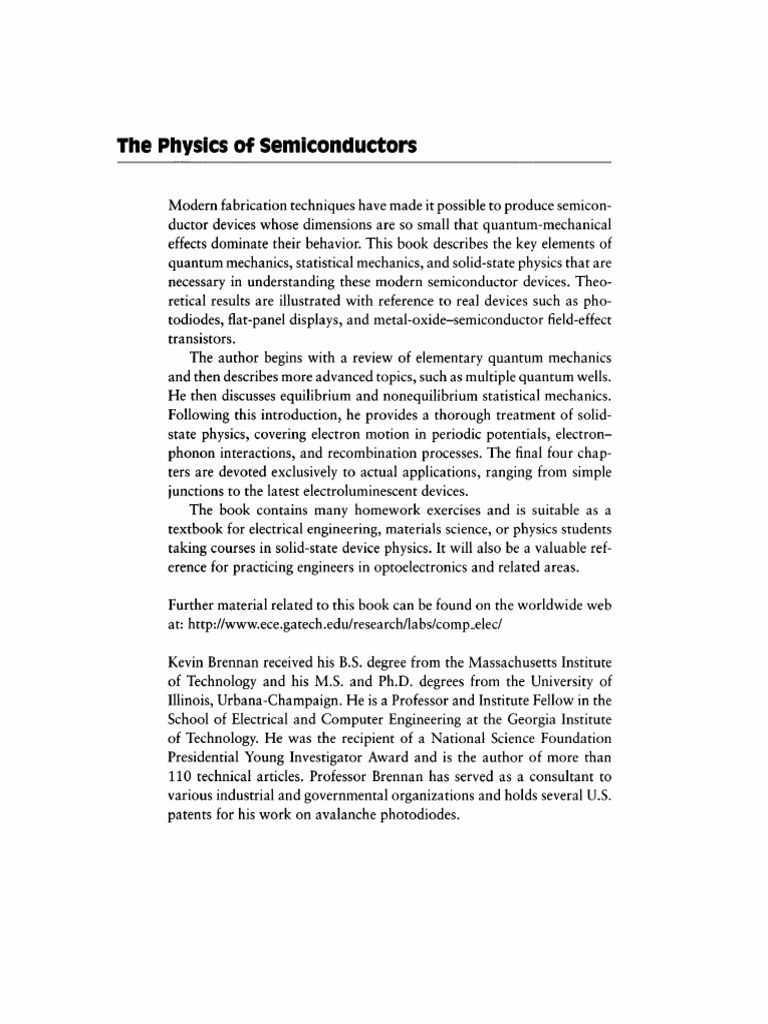The realm of semiconductors is as vast and varied as the applications they serve, particularly in the optical domain. As researchers and innovators push the boundaries of science, one must ponder: which specific semiconductors hold significant promise as optical devices? This inquiry invites both enthusiasm and a potential challenge, as the exploration of these materials often requires a deep dive into their physical properties, mechanisms, and technological applications.
Semiconductors are materials with electrical conductivity between that of a conductor and an insulator. Their unique band structure allows them to manipulate electron flow, making them indispensable in electronic and optoelectronic applications. In the context of optical devices, semiconductors are often employed for their ability to emit, modulate, and detect light. The question, however, is which semiconductors stand out in this field, and what specific applications can they cater to?
To embark on this exploration, one must first consider the most prominent semiconductor materials: silicon (Si), gallium arsenide (GaAs), indium phosphide (InP), and wide-bandgap semiconductors such as gallium nitride (GaN) and zinc oxide (ZnO). Each of these materials has unique properties that make them suitable for various optical applications.
Beginning with silicon, it’s important to note that while it is primarily known for its role in traditional electronics, advances in photonics are uncovering its potential in optical applications as well. Silicon photonics leverages the semiconductor’s ability to form waveguides, enabling highly efficient optical communication systems. Silicon-based modulators and photodetectors are becoming integral components in data centers, enhancing data transmission speeds and reducing energy consumption.
In contrast, gallium arsenide has been a long-standing favorite in the field of optoelectronics. Its direct bandgap allows for efficient light emission, making it ideal for lasers and light-emitting diodes (LEDs). GaAs-based devices are commonly found in telecommunications, particularly in high-speed fiber-optic systems. The ability to produce laser diodes that operate at specific wavelengths makes GaAs indispensable for various applications, including optical fiber communication, as well as integrated circuits that require fast data transmission capabilities.
Turning to indium phosphide, this III-V semiconductor possesses attributes that make it particularly suited for high-frequency and high-temperature applications. The material exhibits a direct bandgap similar to GaAs, but with a larger energy bandgap which allows it to be used effectively in high-power and high-speed optical devices. Indium phosphide lasers, often employed in telecom applications, offer advantages such as low threshold currents and high temperature stability. The integration of InP in photonic integrated circuits (PICs) marks significant advancements in the miniaturization and efficiency of optical systems.
Wide-bandgap semiconductors introduce a new dimension to optical devices. Gallium nitride is a prime example of a semiconductor that has taken center stage in the development of solid-state lighting and blue lasers. GaN enables the construction of efficient LEDs and laser diodes that revolutionize displays, lighting, and optical storage technology. The brilliance of GaN lies not only in its efficiency but also in its wavelength tunability, which impacts various applications ranging from medical technologies to consumer electronics.
Zinc oxide, another wide-bandgap semiconductor, has recently garnered attention for its potential in optoelectronic devices. ZnO exhibits strong excitonic emissions at room temperature, which makes it promising for applications in UV-emitting devices and transparent conductive oxides. Its unique properties allow for potential uses in sensors, displays, and even as a substrate for other optoelectronic devices, showcasing the versatility within the optical domain.
In pondering the landscape of optical semiconductors, it becomes increasingly clear that the interplay between material properties and technological advancements shapes the future of optoelectronics. With emerging materials like perovskites and organic semiconductors beginning to challenge traditional silicon and III-V materials, one can only wonder how they will integrate into existing systems. The exploration of these new avenues highlights the ongoing quest for novel materials that can deliver enhanced performance, efficiency, and cost-effectiveness.
Moreover, an area that deserves attention is the miniaturization of optical devices. As technology continues to evolve, the demand for smaller, more efficient devices grows. This has spurred research into nanostructured semiconductors, where manipulating light on a nanometer scale can lead to unprecedented advances in sensor technology, energy harvesting, and quantum computing applications.
In conclusion, the inquiry into which semiconductors have applications as optical devices reveals a captivating tapestry of materials, each with its unique strengths and weaknesses. From silicon’s redefined role in photonics to gallium arsenide’s dominance in laser applications and the emerging potential of wide-bandgap semiconductors and nanostructured materials, the landscape is dynamic and evolving. Embracing this challenge means not only recognizing the capabilities of existing semiconductors but also remaining open to the innovations that the future holds. With each new discovery, the boundaries of optoelectronic applications expand, reminding us of the integral role that semiconductors will play in shaping our optical futures.












